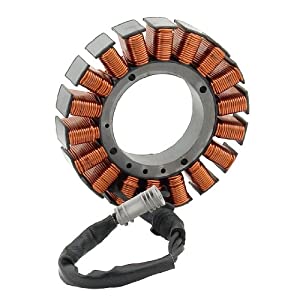Jeremy Harris said:
flathill said:
Jeremy Harris said:
You're right, Miles, it doesn't make any difference. These motorcycle alternators are built right down to a price, with thick (cheap) laminations, poor copper fill (so they can machine wind the stator) and ceramic magnets (again because they're cheap).
It does make a difference. It is just so negligible it shouldn't be taken into consideration.
Yes, sorry, I just forgot to put the <pedant> tags around the "any difference" part...................... :wink:
At least I'm not a pedantic grammar nazi

"There are 2 methods used in Magnetics Designer to compute
the fields in the winding stack. The first approach computes the
magnetic fields based on an estimation similar to the
conventional approach described by Dauhajre [24] which
constructs the field from the core outward for solenoid windings
and sideways across the length of the bobbin for sector wound
configurations. The former approach gives good results for a
single sector; however, the latter approach is in error for thin
side-by-side sectors. Fields in the winding stack are influenced
by neighboring currents, causing the field to be centered about
the sector. The algorithms used in Magnetics Designer account
for the sector shapes in distributing the fields. The method for
automatic design uses this method because it is fast enough to
direct the program to a good optimization.
The second method uses the same equations to predict AC
losses, but it makes a magnetic field estimate using the following
equation:
4 r3
dH idl r
π
×
= 4.8.2
An iterative solution is required because the current distribution
in the wires affects the field in nearby conductors. The red lines
in the field map represent the current on the high field intensity
side of the conductor, the field intensity is given by the gray
scale, where black is strong, white is weak. The solution is
basically a quasi-static solution of Maxwell’s equations. The
winding stack magnetic field can be estimated without solving
for the fields within the core by assuming that the core shields
most of the field that penetrate the core. Including the phantom
surface current winding accounts for the gap fringe fields. This
solution is too lengthy to be used for optimization
This site is super fun:
http://www.falstad.com/vector3dm/
Darn flux distortion :wink:



